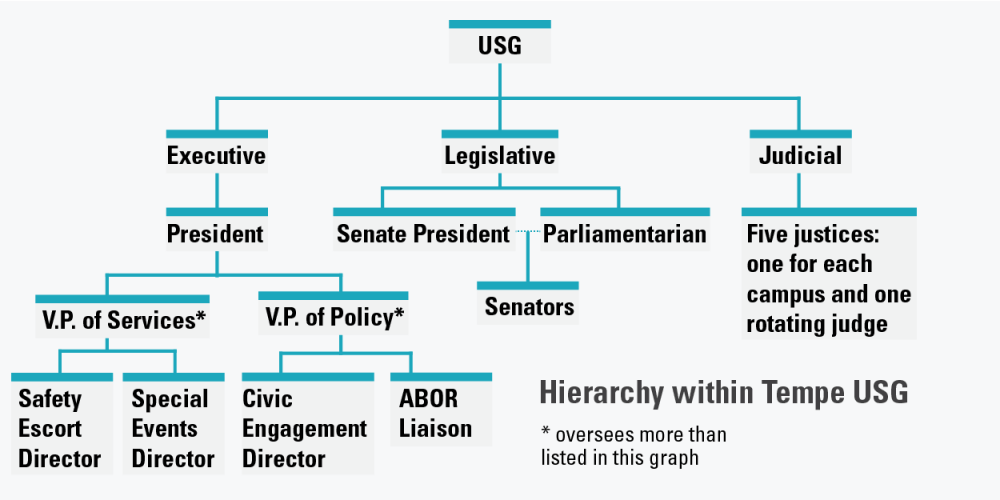The Tempe Undergraduate Student Government has been receiving a great deal of attention both within the ASU community and without, after the impeachment of Tempe USG Senator Isabelle Murray because of her violation of USG guidelines.
However, to understand the news surrounding it, one must understand how USG works. Most students are not actively involved with the proceedings of USG, as the median election turnout for previous years' Tempe USG elections was 8.8 percent of the total Tempe undergraduate student body.
The following are some key points to know about Tempe USG and how it aims to serve the Tempe campus:
If a constituent has an issue, there are several ways to bring the problem to the attention of his or her college's representatives.
Daniel Martin, Barrett senator and chair of the Government Operations Committee, said college council meetings are the senators’ most direct link to their constituents.
For specific issues, though, individual meetings can be made. Martin said the senators strive to be accessible, despite the fact that many students aren’t aware of these methods.
“There’s a lot of different ways to access us, even if it doesn’t seem like it,” he said.
Tempe USG elections have had a varying level of voter participation within the past seven years.
Participation peaked in 2010, when the race for Tempe USG president was tight, and led to a runoff election in which the victor, Jacob Goulding, only succeeded with 58 percent of the vote.
Participation bottomed out in 2012. During this election, Mark Naufel was elected Tempe USG president in an uncontested race.
Historically, the median student voting participation in the Tempe USG elections has been around 8.8 percent of the potential voters on the Tempe campus.
The Tempe USG hierarchy generally consists of the executives, legislative and judicial branches.
The executives — president and vice presidents — run on a joined ticket and are selected as a team.
The president appoints his or her cabinet, including the chief of staff and directors of outreach.
The senate president is elected by the Senate, while the senators are elected by their constituents in their representative colleges or schools.
Senators also serve on committees, where they can become chairs and be in charge of appropriations, finance, government operations or university affairs.
The USG Supreme Court is a body shared by all campuses, charged with deciding all non-election complaints.
With the recent case of impeached Sen. Isabelle Murray, the Supreme Court justices were appointed Nov. 2, earlier than in previous years, in order to prepare for her appeal.
According to the USG bylaws, the justices are supposed to be appointed by Oct. 1; otherwise, the president’s compensation will be immediately suspended.
However, USG has not been following this bylaw in recent years. According to the bylaws, the Court has a chief justice who is selected by the other justices.
Since the 2011–12 academic year, Tempe USG has steadily increased its volume of proposed bills.
Highlights of Tempe USG's recent activity include the 2011 "Walk Your Wheels" campaign that led to the Walk-Only Zones, the 2013 athletic fee bill that went into effect this year and the 2014 post-UCLA football game blackface bill.








